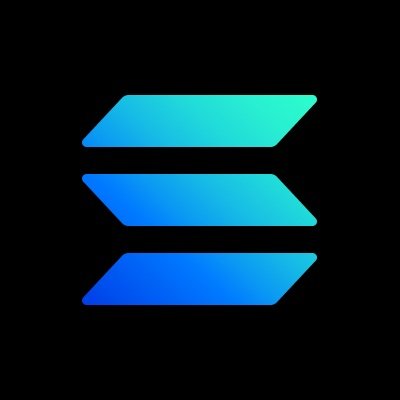Out of the loop io.net, who is paying for AI narratives?
Author: Joyce, Sky
Three months ago, during the first phase of the incentive program launched by io.net on March 1, io.net founder and CEO Ahmad Shadid stated in a press interview that the token was expected to go live on April 28. Even after a surge in GPU supply over the following month, io.net CMO Garrison still indicated in an early April interview that "io.net" was on track to release the token, coinciding with Nvidia's earnings report, which would be an appropriate time."
However, on April 25, the io.net team announced in their Telegram group that the trading platform required the TGE of io.net tokens to be postponed until after April 28. Now, a month has passed since the initial date, and the issuance time for io.net tokens remains uncertain. After the snapshot, the community seems to have lost interest in io.net.
Since the start of the mining incentive program, io.net has undergone tremendous changes over the past three months, first being viewed as a star project in this bull market, then facing repeated allegations of data manipulation, and the founder's dark history being exposed, leading many users to form rights protection groups to "denounce io.net." Although the token has not yet launched, many users believe that their high yield expectations have been dashed, but "overall, io.net is a good project."
After all, everyone understands that outside of io.net, the market has shifted. Ten days ago, amid community dissatisfaction with "high FDV" projects, Binance announced changes to its listing rules, beginning to support small and medium-sized crypto projects, aiming to provide opportunities for more projects with good fundamentals, organic community foundations, sustainable business models, and industry responsibility, thus promoting the development of the blockchain ecosystem. And today, after the token issuance delay, io.net announced that the third phase of the mining activity will start on June 1.
A Flood of Traffic
Looking back, the explosive popularity of io.net two months ago was inevitable. Since February, AI has become the recognized wealth code in the crypto community. Nvidia's stock has been hitting new highs, OpenAI launched revolutionary new products, WLD surged several times in just a few days, and a host of AI tokens outperformed most other sector tokens.
Equipped and Ready Retail Investors
According to past narratives, this round should yield some new projects in the AI sector, with lucky early community users reaping hundredfold benefits. Adhering to the philosophy of "buying new, not old," among numerous AI projects, io.net appeared to be the most "reliable" project.
Generally speaking, the community tends to categorize the intersection of AI and Web3 into three sub-directions: computing power, algorithms, and data. Many new AI projects emerged two months ago, with GPU leasing being the most favored positioning among them. The reason lies in the fact that most retail investors find it difficult to understand the positioning and development space of such projects at the intersection of AI models, applications, and crypto technology. Nvidia's continuous rise made everyone realize the necessity of "computing power," giving io.net a natural advantage in user perception compared to other projects.
Essentially, the decentralized computing power projects that have emerged currently fall under the category of Depin, and the Depin projects on Solana experienced a breakout last year. The combination of AI, Solana, and Depin made io.net a "chosen project." Besides choosing the right track, io.net also had in-depth cooperation with Render Network in its early stages, during which RNDR was in an upward cycle, rising from below $4 to $13 in just two months.
In February and March, very few KOLs promoted io.net on social media. However, after io.net launched its two-month-long Ignitio.net points reward program on March 1 and directly announced the token launch date—after April 28—large numbers of users flocked to io.net. An early participant in io.net shared with BlockBeats his observation, "The number of members in the Discord community increased tenfold in just a week."
On March 5, io.net announced the completion of a $30 million Series A financing led by Hack VC, with participation from Multicoin Capital, 6th Man Ventures, Solana Ventures, OKX Ventures, Aptos Labs, Delphi Digital, The Sandbox, and other institutions. Among them, Multicoin Capital had previously achieved remarkable success in the Depin field by participating in the early financing of Helium Mobile (MOBILE). Additionally, individual investors included Solana co-founder and CEO Anatoly Yakovenko, Sandbox co-founder and COO Sebastien Borget, and Animoca co-founder and executive chairman Yat Siu.
With the backing of powerful VCs, participants in the io.net project did not consider how to overcome technical challenges in the process of achieving decentralized computing power or whether there would be a suitable and sufficient demand side to pay users and the platform. "From a user's perspective, I don't care if you succeed or fail, it's all about how well you tell your story."
The technical participation threshold for io.net is not low. BlockBeats observed that in the early stages of the event, the Discord was filled with bug feedback, and the project team specifically opened a channel called "support ticket" to receive and address user-submitted issues. Early participants in io.net expressed to BlockBeats that "the high participation threshold" was one reason they were optimistic about io.net, meaning "less competition," and they would have more chips to gain. However, the community was surprised that various io.net mining tutorials later became widely popular across the internet.

An io.net user, Zhu Rui (pseudonym), detailed his experience to BlockBeats. During his first attempt, Zhu Rui found that his device did not meet the requirements listed on the official website and gave up participation. However, he soon noticed that more and more people around him were mining io.net, with many showcasing multiple Mac Minis. "I have a friend… who has a lot of Mac Minis… not sure what they're for…"
Perhaps out of caution against "haircut studios," io.net did not disclose the points details, only stating that points would be related to factors such as machine online duration, bandwidth rating, GPU performance, and device rental time. In addition to contributing their devices, participation in galaxy tasks and Discord activity levels would also yield varying points, but more users chose to purchase additional devices and come fully equipped.
Not wanting to miss out, Zhu Rui began to consider entering the market. He meticulously studied the configuration plans circulating in the community, initially considering buying a Mac Mini directly. "This strategy is suitable for players with a small number of graphics cards, as it becomes cumbersome to configure beyond 100 units, requiring dedicated personnel to maintain them in a specialized location. It's like a mining farm, which is a heavy asset. However, there are benefits; you can sell it second-hand at half price after use or switch to mining other projects." During his research, he speculated that this direction might already show signs of competition, "Earlier, the price of a Mac Mini on Pinduoduo was 2100 (RMB), and two weeks later it had risen to 2800."
In addition to purchasing Mac Minis, some users opted to rent cloud servers. "There are domestic and foreign options. Domestic ones are generally in some computing centers, cost-effective, with channels for 3080ti single cards costing about 150-200 USD." The costs overseas are higher, "Google Cloud's single card price is about 1400 USD per month, requiring annual rental and a minimum of 50 cards; Tencent Cloud often runs out of stock; AWS's single card price is around 2400 USD per month, requiring at least 8 cards."
Zhu Rui ultimately chose the "premium account" route, acquiring over 200 T4 single cards from a small foreign cloud service provider, each with a monthly rental of 400 USD, and also equipped with 15 A100 8 cards, each with a monthly rental of 1200 USD. After a month, Zhu Rui's costs for the equipment alone amounted to around 98,000 USD.
In addition to equipment costs, Zhu Rui also made ample preparations against witch detection; he purchased hundreds of IP addresses, manually modified the passwords of 100 Google accounts he bought, and spent a week getting all devices operational.
Zhu Rui is among the larger-scale users of io.net. For small and medium retail investors, after successfully "entering" with their equipment, they still face numerous challenges.
One io.net user recalled to BlockBeats that after navigating the complex configuration process, users still needed to address a series of issues. Devices hanging on io.net frequently dropped offline, and it was difficult for users to discern whether their devices were online. "It's possible that your front-end shows the device is online, but the back-end has actually dropped; we had no choice but to write a script that automatically restarts the hanging devices every day to cope with this issue."
In addition to spending a significant amount of money, io.net users also need to constantly check their device's operational status. For those who cannot write scripts, they can only manually reconfigure. In a configuration tutorial on YouTube with over 10,000 views, an airdrop blogger was also at a loss regarding this issue, "If after completing these configurations you can't see the device's operational status on the official page, I suggest you go through the entire process again."
The high maintenance costs are actually part of io.net's design. The official explanation is that continuously requiring users to reconfigure is to filter out witch accounts. In the later stages of the event, this frequency has significantly decreased. This was also interpreted by some users as a positive signal, as "the bigger the storm, the more valuable the fish." For seasoned Web3 players, as long as the later returns are substantial, the early investment of physical and mental effort is worth it.
"Cloud Service Providers Are Mining io.net"
The popularity of io.net has not diminished despite users' complaints about high maintenance costs. A YouTube blogger, "Alex Crypto Diary," published a video two months ago with a title that might serve as the most fitting explanation for the situation at that time, "【io.net】The most reliable in the AI X Crypto track is the combination of computing power and crypto. Two weeks ago, we planned to deploy 600 machines to mine io.net, but two weeks later, our dream of the data center was shattered! However, this is undoubtedly the best project in the same field before Gensyn's launch."
In the video, blogger Alex explained the reason behind the "shattered data center dream." Originally, they planned to deploy 800 devices, estimating that their computing power could account for about 1%-2% of the entire network. They had found a data center overseas, but during the price negotiations, io.net began to explode in popularity. All the overseas cloud service providers they had previously contacted sought confirmation on whether they were mining io.net, and the previously agreed-upon pricing from the data center doubled.
As io.net gained traction, domestic and foreign cloud service providers who raised their prices became perhaps the biggest winners in this wave of enthusiasm.
Currently, there are no channels to calculate the specific profit figures for cloud service providers in this unexpected windfall brought by io.net. Alex mentioned in a tweet that Amazon Cloud, a leading foreign cloud service provider, generated a total of 40 million USD in revenue from providing mining services for io.net. Although there were more doubts than agreement in the comments section regarding this figure, if calculated based on the hundreds of thousands of GPUs displayed on io.net at that time, this number might not be exaggerated.

Not only overseas cloud service providers benefited, but multiple users interviewed by BlockBeats expressed the same understanding: "All domestic cloud service providers are mining io.net."
A cloud server provider, Xiao Ju (pseudonym), who has data center resources and does not cater to retail investors, revealed to BlockBeats, "Looking back now, renting machines for io.net was the simplest business I've ever done." When asked about the specific rental scale, Xiao Ju stated, "As long as you have enough machine resources, renting out several million dollars' worth of machines a month is very easy; tens of millions is also not difficult, and over a hundred million can be achieved with some effort. All kinds of clouds in China and overseas are sold out; basically, all domestic data centers have been rented out. At that time, all market machine vendors raised their prices; you can rent or not, but if you don't, someone else will quickly rent it."
Moreover, since the devices supported by io.net also include Apple's Mac Mini, "those looking to grab airdrops have driven up the price of Mac Minis on Pinduoduo by hundreds of dollars, and the prices of Mac Minis on Xianyu have also risen by hundreds of dollars."
Even in April, with the first phase of the incentive program halfway through, users continued to try to purchase more devices. Xiao Ju recalled, "After April, I stopped renting machines, but many people still came to me to rent. I replied that renting for a month isn't cost-effective; if you rent, you'll basically be losing money, so don't bother, it's too competitive."
Misaligned Expectations
Based on past narratives in the crypto industry, users investing in io.net seem to have followed the formula correctly. Facing the risk of being countered, it's inevitable that many emotions arise. However, for a Web3 project, the io.net team itself has not done much "evil," continuously improving the interactive experience and responding quickly to controversies. Yet, various issues have indeed occurred, and io.net has faced awkward situations over the past three months.
After the first phase of points was announced, many users received very low points because their machines were not online during the snapshot period, leading to some rights protection actions directed at the io.net project team. Zhu Rui recalled that on May 3, someone on Twitter initiated a space called "io.net Struggle Conference," which attracted over 1,000 users without any prior notice, and the WeChat group was filled with rights protection information.
Points That Can't Be Calculated
Unlike other projects with clear point systems, io.net seemingly never intended to release a points panel from the start. BlockBeats inquired with a user close to the io.net project team in early March about the front-end display of statistical points, and he speculated, "It might be due to insufficient manpower; if I get the chance, I will suggest it to them."
In the two months following the launch of the io.net points program, there have been continuous voices questioning the number of GPUs displayed on the io.net platform. The most notable was the questioning by community member Martin Shkreli on May 13, who posted several tweets regarding the accuracy of the data displayed on io.net's front end, receiving a personal response from io.net founder Shadid.
In the tweets, he argued that the platform's displayed earnings did not match the actual situation. For example, he found that the platform's daily earnings were consistently reported as 1.1 million USD, while the number of online clusters was very low, and the total computation time on the platform consistently showed as 88 hours, etc. After receiving Shadid's explanation, Martin Shkreli released his calculations of the daily specific earnings metrics, with Shadid's responses mainly revolving around discrepancies in data statistical metrics, such as the difference between average daily earnings and cumulative earnings, and that earnings did not account for other specifications of clusters, etc.

Pima, founder of ContinueCapital, pointed out two months ago that several current decentralized AI projects exhibit situations of mutual port calls and "shared computing power." An early anonymous user of io.net also explained to BlockBeats that the devices provided by users on io.net might be rented on Render Network, and vice versa. In early April, io.net's front-end displayed an available GPU count of 200,000, while Render Network's available GPU count was around 3,700.

In this case, calculating points accurately may require more technical capability. The investment firm Mint Ventures mentioned in its analysis of io.net that achieving decentralized computing power requires solving several issues, including engineering verification, parallelization, and privacy protection, with many technical obstacles involved in the parallelization issue, including considerations of decomposing AI tasks, data dependencies, and communication costs between devices.
Objectively speaking, some users indeed encountered witch issues by purchasing "fake cards" for shard machines. Xiao Ju explained to BlockBeats, "At that time, the rental market for machines was very chaotic. Theoretically, the market was very short on machine resources, but there were many vendors; you could get as many as you wanted. This essentially meant that they were selling virtual machines as real machines, for example, using one 4090 to virtually create unlimited cards, allowing vendors to profit at zero cost. Such machines are easily identified later and can be flagged as witches, leading to no points."
Facing the "nationwide hunt," the io.net team issued a lengthy response in Discord, stating that they would conduct a second phase of points calculation, excluding witches and retaining real users. In addition to the points controversy, the team also mentioned that the community was facing "fake news and rumor attacks," pointing out that these were driven by behind-the-scenes fake card studios.

Regarding the data pollution caused by fake cards, various io.net users responded to BlockBeats that "it has been there for a long time." "Two months before io.net announced the points, I already knew that a group of people was heavily involved in fake cards. I went to DC to report it, but the officials ignored me. I often saw others reflecting this issue, but it didn't attract the official's attention until they started calculating points, which was too late," Xiao Ju told BlockBeats.
ImbaTrader also recalled, "A long time ago, there were only a few thousand people in Discord, and at that time, someone claiming to be a student from a certain university in the U.S. questioned the GPU device count displayed on io.net's front end, but no one responded to this matter."
On the other hand, the vague points system indeed left room for the io.net project team to adjust the distribution of chips based on the situation. When "too competitive" became a keyword in discussions related to io.net, community members generally reported a "big account low guarantee" situation in the final points amounts, "Small accounts (with one or two machines) received more points than my large account with dozens of high-end graphics cards. Observing this, small accounts generally received higher points, while larger accounts with more devices received lower points, which seems to favor small accounts at the expense of larger ones." After the second points update, some users found their points tripled.

However, regardless of how points are distributed, the total amount of tokens allocated to miners remains fixed at 32 million tokens. Among these mining devices, it seems that the io.net project team also "holds" a significant portion.
A user mentioned to BlockBeats in early March, "I think many of the A100s in there might be the project's own machines." However, considering that device records have not been put on-chain, the community also questioned the possibility of front-end data manipulation by io.net.
In a video released by YouTube blogger Alex Crypto Diary in April, he recounted that he originally observed the GPU device count on io.net's front end fluctuating between 60,000 and 80,000, but one night it suddenly surged to 140,000 to 150,000. He noticed that the GPU device count displayed on the front end increased by several thousand every half hour, and previously unseen 4070s suddenly appeared in large numbers. Given that the operational status of devices from real users is not stable, the linear growth of numbers raises suspicions of being driven by the project team.
A few days ago, Asa, the head of io.net in the Asia region, participated in a space where community users raised concerns about "inconsistent front-end and back-end data, and the centralization of device data records." Asa responded that "the decentralized tech stack will be an improvement to be implemented later, and our tech team's workload in the past month has been equivalent to that of the past three months."
The stringent witch detection measures, delayed identification of fake cards, and lack of transparency in points have inadvertently raised the participation costs for genuine users who wish to engage meaningfully. Beyond economic costs like traffic and electricity, "it both PUA's you into staying online long-term while not informing you of actual points, so everyone expends a lot of effort, leading to a significant backlash later." Liu, a user facing the community's rights protection actions before io.net's token issuance, analyzed to BlockBeats.
Hard-to-Obtain Chips
User Xiao Ju deeply resonated with this, "For me personally, losing money on io.net is a minor issue; io.net is the most torturous project I've ever worked on. There were days when I would lose connection several times, and after all machines dropped offline, maintaining them took several hours. Once maintained, they would drop again. In short, io.net is the most torturous project I've ever dealt with, a shadow of blockchain."
From the project team's perspective, the criticized high maintenance threshold is actually aimed at managing low-quality nodes. io.net COO Garrison Yang, in a podcast interview, specifically introduced the management of low-quality nodes when discussing the airdrop phase, "We introduced 'time scores' and 'reputation scores.' Each node on io.net has a reputation score, and customers can see a node's availability time, online time, and other performance metrics to aid in decision-making. We continuously ping each node, and if a node does not respond, it is considered unavailable. If it is unavailable, it will not receive rewards."
In the team's vision, "The incentive structure in crypto economics is straightforward: if a node is available, it provides better service to demand-side users and is hired more frequently, earning more rewards. As long as the node remains available and performs well when hired, the demand side will receive the computing power they need, creating a win-win situation." However, this setup later contributed to one of the controversies faced by io.net.
Based on valuation, token share, total points, and off-market prices, most users, aside from early entrants, feel that they will not see much profit from io.net. "A month before the project announced the airdrop points, I already knew I would be countered because the airdrop was limited while the machines were unlimited," "Calculating based on off-market prices and my estimated ratios, in a bad scenario, I would lose about half, and in a good scenario, I would at most break even."
Nonetheless, Xiao Ju believes that the project's issues stem from technical vulnerabilities rather than intentional wrongdoing, "The machines are all rented; io.net has never taken a penny from retail investors." Not only Xiao Ju, but early users and large participants interviewed by BlockBeats expressed varying degrees of continued optimism about io.net. Alex mentioned in a video, "Although I don't recommend participating again, I still believe io.net is a project worth paying attention to."
"Although we were also countered, my money didn't go to io.net. First, everyone needs to understand this issue," Alex explained in an interview with BlockBeats. "Generally speaking, when you interact with a project, the money you invest is taken by the project team, which then decides how to allocate the chips in hand. But the issue with io.net is that in its setup, there are only retail investors and the project team, while in reality, there are cloud service providers, retail investors, and the project team. Retail investors pay money to cloud service providers, who do not pay that money to io.net, so io.net has only been covering wage costs, operational costs, and the ever-increasing expectations."
A VC member involved in the io.net investment process told BlockBeats that they were looking for AI-related projects at the time, and a partner fund introduced io.net. It took about a month and a half from first contact with io.net to deciding to invest. "The early strength it displayed was quite strong, including various technical documents and its partnership with Render. Among the projects we looked at, io.net was a relatively good candidate. However, io.net's valuation was quite high, quoted at 300 million USD, so we didn't finalize it immediately. It wasn't until later when the secondary market valuation increased that this valuation became suitable."
This investor indicated to BlockBeats that the psychological expectations for returns from io.net were far from reality. Originally, it was expected that the FDV could reach 5 billion USD, with an anticipated profit margin of about tenfold. Additionally, insiders informed BlockBeats that some investors had early on connected their already running computing power devices to io.net at a lower cost to participate in mining.
Regarding the various situations that arose later, "There is actually no way to control this aspect; we can only observe the developments later." This investor stated. Technical shortcomings and investor scandals do not yet constitute reasons for exit.
Where is the PMF?
The issuance time for io.net tokens has yet to be determined. Although high return expectations have faded, Zhu Rui and most users still believe that "io.net itself is a good project." "In the crypto industry, product logic isn't very important. If we were to apply the same FUD logic to other crypto products, how many products could withstand scrutiny?" Zhu Rui told BlockBeats, "After this round of FUD, io.net has also reorganized its product structure, which I think is a good thing. Now that the market is recovering, delaying the token issuance is better than launching it in a bear market a month ago."
The decentralized concept of asset ownership, which has evolved over more than a decade, and the continuously evolving AI revolution, under the understanding that "AI represents productivity and Web3 represents production relations," cannot deny the immense imaginative space generated by the collision of the two. From VCs to retail investors, there are high expectations for the development of AI concepts.
However, objectively speaking, as a hot narrative in this bull market, the charm of Web3xAI stems from the explosive innovation of AI productivity outside the crypto community. Compared to previous years' DeFi, GameFi, and other crypto-centric project categories with traceable valuation models, the AI sector is entirely different. In the research reports of major investment research institutions, this direction seems to still be in the stage of "elaborating on imaginative space and classifying existing projects."
Early io.net user ImbaTrader told BlockBeats, "I think the high narrative expectations for io.net may be more due to the Web3 market's desperation for this narrative rather than the excellence of the io.net project itself."
Technical levels and product logic being questioned is a situation all Web3 projects encounter. The real challenge io.net needs to address is that in the community's reputation, it seems to have shifted from being a "top narrative project this year" to a "VC high FDV project."
Nonetheless, the AI narrative still undeniably possesses vitality. In an environment where computing power is becoming increasingly scarce, as io.net continues to refine its product, decentralized computing power still has significant scale and funding advantages. For AI-related projects, there is inherently a massive demand for funding, and dismissing project development solely based on "high FDV" is somewhat one-sided.
In the Web3 world, how to navigate the trends is a question every project needs to ponder. Whether to "embrace the bubble" or "carve a boat to seek a sword" can only be answered by time.














